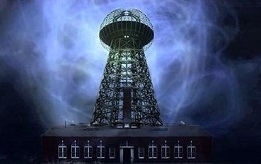In this thread we will take a look at the topic of parametric resonance. What is parametric resonance? We know of other kind of resonant systems that they have inherent parameters like capacitance, inductance and resistance to name the most important. Due to these properties the circuit has a certain resonant frequency, in which the inductive reactance (+) and the capacitive reactance (-) are cancelling each other, and only the ohmic resistance remains. The latter is mostly responsible for the Q factor of a resonant circuit. To such a resonant system energy can be added or subtracted by means of magnetic or electric coupling. If no load is connected to the system, a very small amount of energy is sufficient to sustain the oscillations, provided that the losses are kept small. The energy has to be added in phase with the current or potential of the oscillations, depending the type of coupling. So far the conventional resonance, but when we deal with parametric resonance, the oscillations are not sustained by adding current or voltage directly into the resonator. In this case a parameter of the circuit is repeatedly modified, ideally at twice the resonance frequency. Depending on the phase this produces a positive or negative feedback. In the short video below I will show two examples of parametric excitation of a pendulum.
Note the subtle difference. These analogy will help us to understand the equivalent electric circuit. We can say that the potential energy of the pendulum is analogous to the electric potential. The kinetic energy is analogous to the current. But there is a third parameter involved, as in every resonant system. In the first example of the pendulum it's length is modified, which corresponds to a change of inductance in an electrical oscillator. In the second example it is not so easy to understand what's going on. The length of the pendulum is constant in this case. The pendulum has a certain mass(Wight). It's potential energy depends on the altitude. But we do not change the average altitude of it, nor its mass obviously. So what is modified? The third parameter, gravity in this case. By moving the whole thing up and down repeatedly, the gravitational force acting on the pendulum is modified during certain parts of the cycle, by adding and subtracting inertial force. As already mentioned the parameter should be modified at twice the resonance frequency ideally. Why is this so? Because the third parameter execute a force of acceleration in our example to the pendulum, regardless if it moves to the right or to the left. It can also be done at the same frequency with the correct phase shift and timing, but much less efficient.(the difference is like pushing the swing in both directions or only in one) In the case of the electric resonator, if for example the parameter of inductance is modified, the effect will be the same regardless if the current is positive or negative. In this context I want to point out a wide spread misconception in electricity, that of negative potential. Electric potential, by the ancient correctly named as pressure( of charges), is always positive. We can again use another analogy to understand. Sound waves in the air. It could be said that they occur as waves of compression and rarefaction of the medium. But the middle line is the average pressure of the atmosphere. Pressure is a scalar value and always positive. There is no pressure lower than vacuum, but towards the positive side there seems to be no limit, other than a change of the state of aggregation. The same can be said for electric charges, there is an average pressure of them on our planet, and this led science to employ the concept of negative potential for values below the average. But there is a limit on the low side, when no charges are present, which also limits the possible maximum energy of a "negative potential"(a wave or pulse of rarefaction), in contrast to the positive pressure of charges still no limit is known. Back to the parametric resonance in electrical systems. It is very difficult and impractical to modify the capacitor or capacitance of a resonant system at a fast rate. But it's relatively easy for the inductance, taking advantage of the nonlinearity of ferromagnetic materials. But there's another way to obtain parametric excitation in electrical oscillators. That is the method used in the so called BTG , in these devices another parameter is modified. There will be hardly found any hints in textbooks in this context, despite that the phenomenon is known (at least partially) by official science. It is the gradient of excitement of atoms. In earlier posts(the thread "concepts of above unity devices": https://free-energy.proboards.com/thread/90/concepts-unity-devices is still on the backup forum, will be imported soon) you can find the description and the analogy of the termo-acoustic resonators, which are parametric excited as well. They can give us a good explanation how the BTG devices likely are operating. No law of energy conservation is violated, and most of it's principles can be explained satisfactory by classical physics.
Vidura



